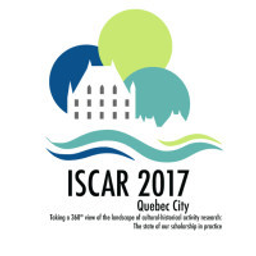ABS146 - Digitalization, complex objects and learning in networks
Thème:
3.5 Unit of analysis: historicity, context, and levels of analytic scale
Quoi:
Paper
Quand:
4:30 PM, Jeudi 31 Août 2017
(20 minutes)
Où:
Convention Center
- 205 A
Comment:
This paper investigates learning challenges by focusing on complex objects that emerge and are co-created on multiple levels of a digital printing network. Digitalization transforms the object of digital printing activities: they become more complex, open-ended, difficult to define, and exist in a variety of instantiations. The research follows a small network of digital printing, constituted by representatives from design, printing industry, vocational education, research, and customer-consumers. The network collaboratively plans and implements novel digital product and service concept. The objects determine the horizon of possible actions for the participants’ creative activity (Engeström, et al., 2003). In the cultural-historical activity theory framework, the diversity and multiplicity of objects and activities can be analyzed on multiple levels of learning emerging in a network (Toiviainen, 2003; 2007).
The research questions are: What are the instantiations of the object of multiple activities in the digital printing network? What kind of challenges and opportunities do complex objects produce for collective learning?
The empirical analysis focuses on the data from a network-learning workshop. The results of a thematic analysis of the workshop discussion show that the complexity of the digitalized object appears in the multiple instantiations represented differently for different stakeholders – figurative, digital, material-haptic, etc. (Knorr Cetina, 2008). We interpret our findings as challenges for learning in the emerging digital printing network that collaborates to create and expand with digital service.
The research questions are: What are the instantiations of the object of multiple activities in the digital printing network? What kind of challenges and opportunities do complex objects produce for collective learning?
The empirical analysis focuses on the data from a network-learning workshop. The results of a thematic analysis of the workshop discussion show that the complexity of the digitalized object appears in the multiple instantiations represented differently for different stakeholders – figurative, digital, material-haptic, etc. (Knorr Cetina, 2008). We interpret our findings as challenges for learning in the emerging digital printing network that collaborates to create and expand with digital service.
